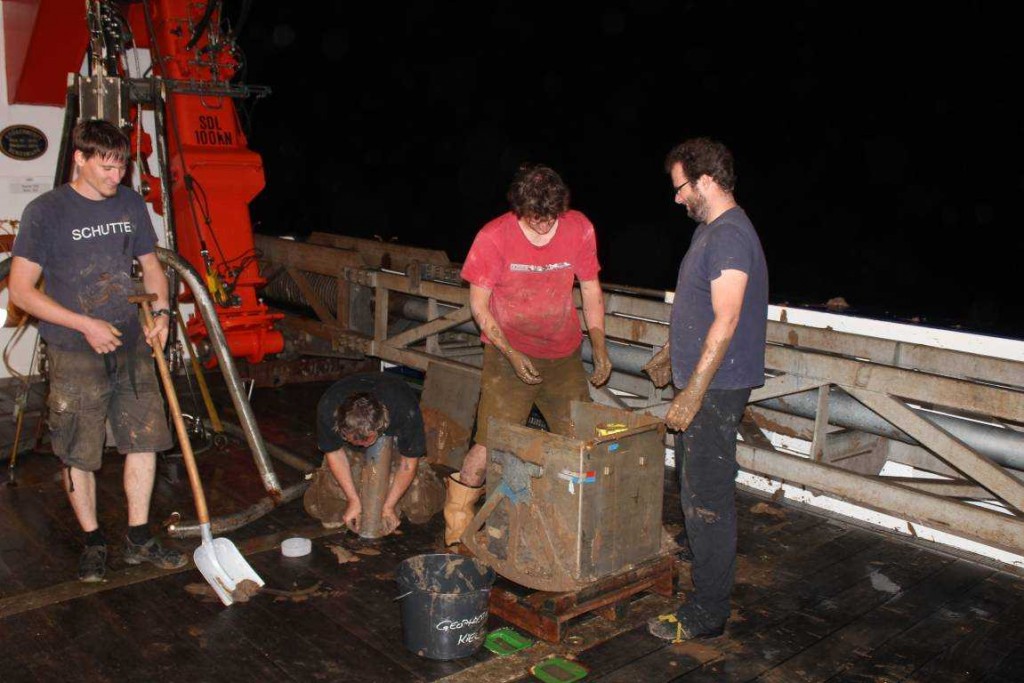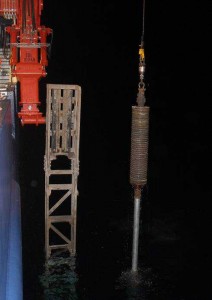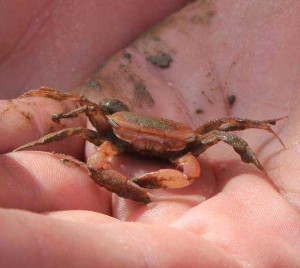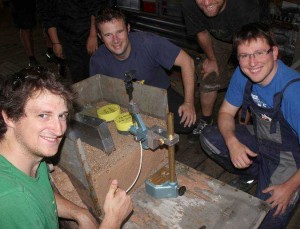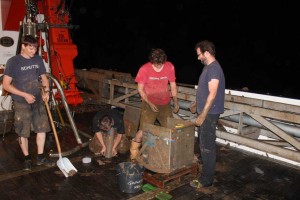Mud Mud Glorious Mud
Some people on board are blogging about wildlife, some people are blogging about how we are mapping un-explored areas of the seafloor, and using sound-waves to see into the surface of the earth. I am going to blog about another crucial aspect of the work on board the Merian and that’s mud. The types of mud we find in different places across the seafloor can tell us all sorts of things. For example, Have any underwater landslides happened in the last few thousand years? What animals and ecosystems live on the seafloor? We don’t know until we have a look at the mud…
The gravity corer during deployment
The seafloor is covered with mud, it’s almost everywhere. How do we sample it? Well we have a couple of high-tech pieces of equipment on board for that. The first is called a gravity corer. The corer is a steel tube with a 2 ton weight nailed on one end. To sample the seafloor mud we drop the corer over the side and when it reaches the bottom the steel tube should sink into the seafloor sediments. Then we pull the corer back up and examine what sediments are inside. We want to find out what layers of sediment are in the core, a bit like looking at a slice of cake, except in our case we are not looking for layers of cream or jam. Instead, we are looking for clues in the mud that might tell us if any giant underwater landslides have occurred in this area. The second high-tech piece of equipment is called a box corer. This is a large steel box with a 2 ton weight on the top. We drop it over the side and when it hits the bottom it should sink into the sediments. Then we pull it back up and see what’s inside. We have recovered lots of interesting mud this way and even some wildlife!
A deep-water crab
Testing some mud from a box core.
The cores we get on board are all examined closely and undergo a series of tests. Samples are also taken for laboratory analysis when we are back in Kiel. Once all the sampling and testing has been done the clean up operation can begin…
The clean up operation…
The one thing you must understand about coring is that it is muddy business and the cleaning process is quite challenging. Everything get’s covered in mud, the corer, the deck of the ship, us. In particular, once we have finished sampling the box cores the remaining sediment has to be dug out and thrown overboard. This is easiest to do by hand and it gets a bit messy!
Chris Stevenson
